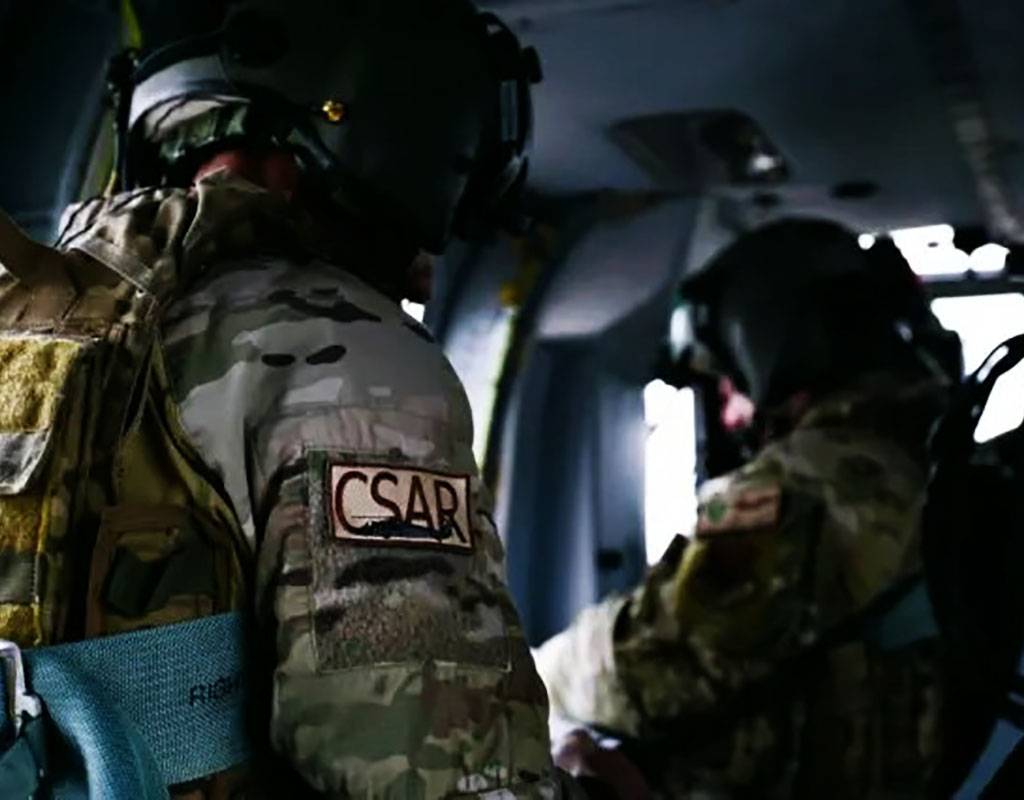
The 41st Rescue Squadron became the first in the U.S. Air Force to test-fire the GAU-21 and GAU-2 weapons systems on the HH-60W Jolly Green II helicopter at Moody Air Force Base, Georgia, March 2022.
The 41st RQS trained on the weapons systems to set a baseline of combat search and rescue (CSAR) tactics, techniques and procedures (TTP) for the entire Air Force rescue community with HH-60W aircraft in their inventory.
Since the 23rd Wing replaced all HH-60G Pave Hawk aircraft with the newer Whiskey model, the 41st RQS and 41st Rescue Generation Squadron have made it their mission to get their Airmen up to speed with the new assets.
“We’re the only combat force in the entire Department of Defense and the whole world, which is a dedicated force that solely does personnel recovery behind enemy lines in a high-risk environment,” said Lt. Col. Thad Ronnau, 41st RQS commander. “It becomes vital that we perfect the art of CSAR, train this and the next generation effectively and have a truly combat-ready force any combatant command can rely on to execute the mission.”
With the new weapons systems, pilots and special missions aviators can accomplish CSAR operations more effectively and safely.
“There’s a lot of new stuff they added to the (GAU-2) that really has improved it, like the fact that it runs on a separate battery system,” said Master Sgt. John Rosenberg, 347th Operations Support Squadron weapons and tactics superintendent. “Those things add an extreme tactical advantage, because if you have to put the aircraft down somewhere you don’t want to put it down, you can still defend it without it running.”
Due to the risks of CSAR, having the capability to defend themselves and the aircraft in any scenario is critical. However, every new capability requires hours of practice and refining to ensure successful employment.
With the help of the 88th Test and Evaluation Squadron Detachment 2, the 41st RQS was able to sharpen these TTPs while communicating issues and resolving problems more quickly and efficiently, facilitating the process to become fully combat ready.
“The TTPs that we come up with are printed in a manual, so anybody that flies in the community of the HH-60W can reference them until they’re rewritten or adapted,” said Maj. Evan McNeal, 88th TES Det 2 director of operations. “It gives them a best use case for whatever mission or objective they have, and that’s what sets them up for the most success.”
Keeping up with emerging technology is one way the rescue community improves their CSAR capabilities. However, without deliberate training, the newer equipment will only get them so far.
“The advantages and disadvantages of this system, or any system, is the training, and I think the 41st is going in the right direction getting as many people trained on this,” Rosenberg said. “This is an impressive weapons system, but what’s most impressive is the way the squadron is moving forward training the guys to use it.”
Rosenberg said it’s crucial for the Airmen to challenge themselves every day to maintain readiness, and Airmen throughout the CSAR community agree.

“Being constantly in the game, thinking about how we’re going to do our job is vitally important because we have to get those guys out of harm’s way,” McNeal said about rescuing downed aircrew.
As the 41st RQS and 88th TES continue to analyze data collected through training, the rescue squadron will share their findings and best practices throughout the rest of the Air Force. . The TTPs will be accessible and updated to all HH-60W operators to reference and provide information so training can be accurate and efficient.
Advancements like these also support Air Combat Command’s goal for Team Moody to be Lead-Wing ready by October of 2022.
This press release was prepared and distributed by 23rd Wing Public Affairs.

